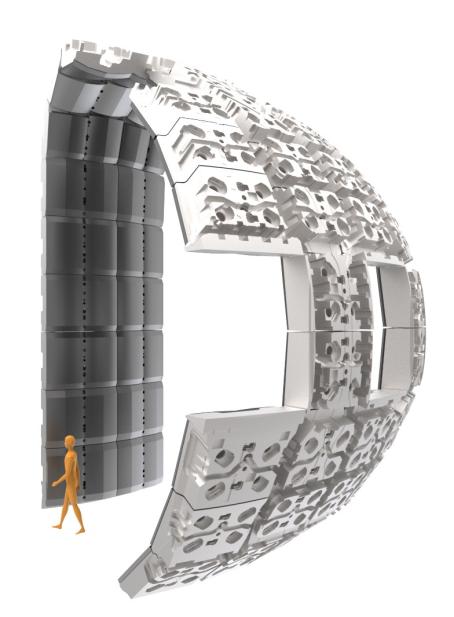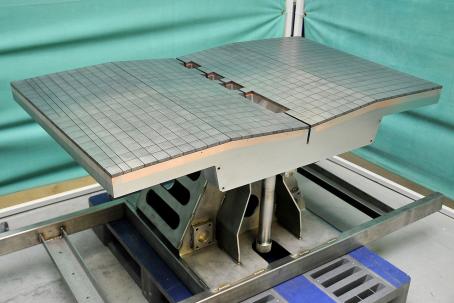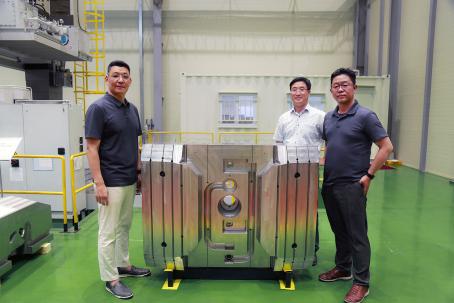
Blanket
3 min read
Blanket protects vacuum vessel from harsh conditions provided by fusion plasma. Because the vessel cannot be replaced, any damage to it will incur would cause termination of experiments.
Blanket Modules
Besides temperatures of 150 million kelvin, the plasma tries to attack the vessel with high neutron flux and also with plenty of instabilities and disruptions that eject high-energy particles. The vacuum vessel wall is therefore coated with 440 removable modules of blanket that protects vessel and toroidal magnets behind it from neutron flux and heat.
Design
Their design varies slightly depending on the position of the modules in the vacuum vessel, but generally each blanket module measures 1 × 1.5 metres and weighs up to 4.6 tonnes. They consist of a main shield block mounted on the vessel wall and a detachable first wall that directly faces the plasma. Stainless steel shielding blocks are designed as neutron shielding — as neutrons slowdown in the material of the block, they change their kinetic energy into heat. This is removed by water flowing at 4 MPa through channels in the blocks.
Active Cooled Blanket
ITER will be the first tokamak with an active cooled blanket. The cooling system is prepared to remove up to 736 MW of thermal power. In a thermonuclear power plant, this energy will be used for electricity production.
Plasma Facing Components
Each shielding block is bolted onto a vacuum vessel at four points and to it detachable first wall panels are mounted by special studs. First wall panels cover a surface of 600 m².
There are two types of plasma facing components — 215 normal heat flux first wall panels are designed for heat fluxes of up to 2 MW/m², while the rest 225 enhanced heat flux panels are designed to survive harsher plasma conditions and heat flux up to 4.7 MW/m². To help them survive contact with 150 million kelvin hot plasma they are made from beryllium tiles bonded to a copper alloy heat sink mounted on a stainless steel structure. These tiles resemble carbon tiles which protect space shuttles during their descent through the atmosphere — but ITER tiles will have to withstand several times more intensive heat flux than any space shuttle. Beryllium was chosen for its unique physical properties — it does not cause plasma contamination and does not accumulate tritium on its surface. Tritium retention would otherwise be a problem; tritium stuck to the walls is missing in the fusion reaction.
First Wall Panels
The first wall panels are made out of shaped “fingers” that are attached to a structural beam that serves as the backbone of each panel and that also houses the cooling water channels. It is assumed that each first wall panel will be at least once remotely replaced during ITER operations.







